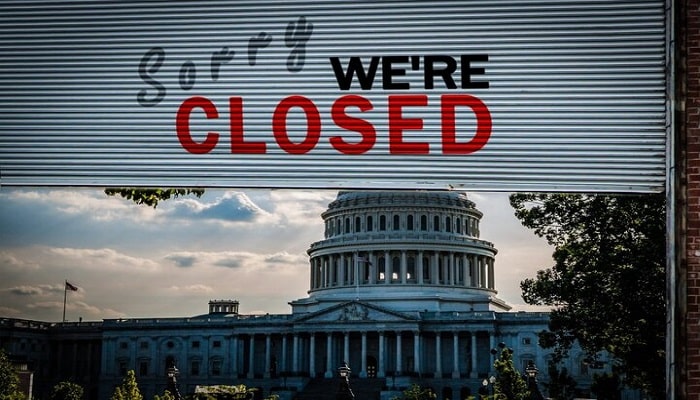PNN – The US government has shut down after Republicans and Democrats rejected each other’s temporary funding proposals; but what does this shutdown mean?
The US federal government was shut down on Wednesday morning after Democratic representatives in the US Senate opposed a Republican-proposed bill to extend government funding.
The main issue of contention between the two parties was health care, but the government shutdown means that almost all non-essential federal services could be completely shut down until an agreement is reached.
What does this mean for America, and has this happened in previous years?
What is a government shutdown?
A federal government shutdown means a halt to all non-essential government activities. This pause affects everything from social security to air travel and access to national parks.
Federal agencies rely on Congress passing a budget so the president can sign the fiscal year funding into law.
If the budget isn’t approved due to political disputes—as is currently the case in the U.S., which is deeply divided—these agencies must shut down. This means employees cannot go to work and won’t receive pay during the closure.
Read more:
The US government shutdown crisis in the shadow of the negative credit rating’
Which departments continue to operate?
According to Sky News, federal agencies deemed essential continue to operate. The FBI and CIA do not shut down, air traffic control continues, and the National Guard and border security forces remain active. The national power grid is also unaffected.
Social Security payments continue, healthcare services for veterans and those relying on Medicare or federal health programs remain active, and the postal service continues delivering mail.
What happens to employees?
During the last shutdown in 2018, out of 800,000 federal employees, 340,000 were furloughed. Employees on furlough are paid retroactively once they return to work. However, the delay in pay can put financial pressure on families, especially amid rising living costs.
Decisions about who is furloughed and who continues working are made by individual agencies, although the White House Office of Management and the president have threatened widespread layoffs.
Any layoffs could put additional strain on agencies that were already affected earlier in the year by mass workforce reductions under the government “efficiency” plan, at the time overseen by Elon Musk.
Why does this feel familiar?
Because it has happened many times before. Since the mid-1970s, Americans have faced 20 government shutdowns or funding gaps.
In 1995, the U.S. government shut down for about a month when President Clinton and the Republican-led Congress could not agree on federal spending levels.
The most recent shutdown in 2018 occurred when Democrats refused to approve Trump’s funding plan for the southern border wall. That shutdown lasted 35 days. Other previous shutdowns typically lasted less than a week.

